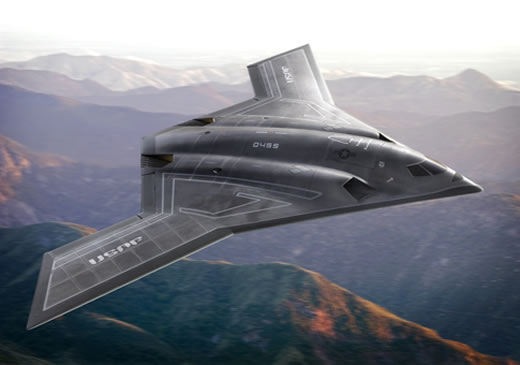
As part of the Pentagon’s wide scale budget cuts reducing military spending by over $100 billion over five years, the Air Force expects to share $34 billion of the total amount, mostly by improving operating efficiencies. Consolidation of two air operations centers in the U.S. and two in Europe, reducing fuel consumption within the Air Mobility Command, improving supply chain and business processes at depots centers and reducing the communications infrastructure costs are part of these measures.


The cuts will finance future development, modernization and procurement plans, including the development of a new long-range, nuclear-capable penetrating bomber, enabling the Air Force to establish flexible force projection into the future. According to Gates, this ‘optionally piloted’ bomber will be designed and developed using proven technologies, an approach that should make it possible to deliver this capability on schedule and in quantity. “It is important that we begin this project now to ensure that a new bomber can be ready before the current aging fleet goes out of service. The follow on bomber represents a key component of a joint portfolio of conventional deep-strike capabilities – an area that should be a high priority for future defense investment given the anti-access challenges our military faces.” Gates said.
Bill Sweetman has commented in Aviation Week Ares Blog: “The bomber program could well follow the lines set out in the Center for Strategic and Budgetary Assessments (CSBA) report issued in September. It is very likely to draw on next-generation stealth research carried out in the classified world in the past decade, and represents a major success for bomber advocates, who have been pessimistic about their chances of overcoming high-level preference for smaller aircraft and missiles. Gates and Pentagon leadership have apparently settled a number of controversial issues about the bomber – manned versus unmanned, nuclear-capable or not, and penetrating versus standoff-missile carrier.”
The savings will enable the Air Force to get more of the most advanced Reaper UAVs, moving essential Intelligence, Surveillance and Reconnaissance (ISR) programs from the temporary war budget to the permanent base budget. It will also get the funding for the modernization of F-15 radars into AESA types, contributing to further operating cost saving, and buy more simulators for JSF air crew trainers.
“Going forward, advanced unmanned strike and reconnaissance capabilities must become an integrated part of the Air Force’s regular institutional force structure.” Gates stressed. The Air Force will also increase procurement of the Evolved Expendable Launch Vehicle (EELV) to assure access to space for both military and other government agencies.
The Navy is also expected to cut $35 billion by reducing manpower ashore, shifting new airborne surveillance, jamming, and fighter aircraft procurement to multi-year programs that could yield $1.3 billion in saving and disestablishing staffs for submarine, patrol aircraft, and the destroyer-squadrons plus one carrier strike group staff.
These savings will be used to support the accelerated procurement of littoral combat ships and destroyers, and accelerate the development of several aviation related programs including the Next Generation Jammer, improving the Navy’s ability to fight and survive in an anti-access environment, and fund the development of a new generation of sea-borne unmanned strike and surveillance aircraft. They will also buy more F/A-18E/Fs and extend the service life of 150 of F/A-18 aircraft, as a hedge against more delays in the deployment of the Joint Strike Fighter.
These resources will also support several Army Aviation programs. These include embarking on the development of a new vertical unmanned air system to support the Army in the future, sustain the procurement of MC-12 type special mission aircraft (EMARSS?) and Gray Eagle UAVs.



















